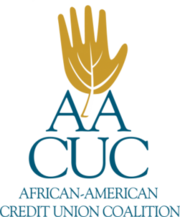Long before there was an Alexa, Siri, or modern GPS, sailors navigated the high seas using the North Star as their guide. The sight of this brilliant, solitary star identified their location and, equally as important, the direction of their destination. As credit union leaders have navigated the volatility and uncertainty of the past few years, many teams have lost sight of True North. What started as strategic responsiveness has evolved into a crisis driven culture. Everyone is working hard, but work disconnected from purpose is like the Titanic headed toward an iceberg, it will negatively impact employee morale, member experience, and the mission of your organization.
So, how can your team rediscover True North? Regardless of your approach, I suggest putting Stephen Covey’s Habit #2 into practice, “Begin with the end in mind.” In other words, ask your team, “What contribution will we make that allows future generations to create an even greater success?”
One of my favorite ways to identify True North results in creating a team mission statement. Now, before you start rolling your eyes at the thought of a mission statement, think of it as your team’s statement of purpose. You are essentially identifying your team’s fundamental contribution to the greater mission of your credit union. At the end of the day, it is the reason why your team exists.
I had the privilege of serving as an executive for an organization whose mission statement ensured that everyone in our community has the opportunity to succeed. Our department, which was Human Resources & Professional Development, concluded that our contribution to the organization’s success required that we “Ensure every employee has the opportunity to succeed.” We understood that employee success was inextricably linked to the organization’s success. That simple statement served as the unifying force within the department, a lens through which we could measure our impact, a True North to guide our decisions and unify our actions. To illustrate our commitment, we renamed our department PEOPLE AND CULTURE, a name emblematic of our new focus, and began aligning our work with True North.
So, has your team drifted from True North? Are they constantly peddling but never catching up? Are they spinning multiple plates, fearful that one will fall if they look away for a second? Here are a few ways you might benefit from a team mission statement.
- Provides a means for answering three questions that are critical to team member engagement.
-
- What is our purpose?
- How does my work help us accomplish our purpose?
- How well am I doing in helping us accomplish our purpose?
- Creates clarity and improves prioritization by giving team members a target toward which they direct their energy.
- Informs decision-making, allowing team members to self-manage and take ownership of outcomes.
- Directs new idea generation and the elimination of outdated practices
Are you ready? I’m including a 4-Step Process to get you started. Before you jump in, here are a few things to keep in mind.
- Your final statement should represent your team’s opportunities, competence, and commitment.
- Your final statement should be succinct enough to fit on a tee shirt.
- Don’t rush the process. Clarity regarding True North is important to your team’s success, so multiple short meetings are more beneficial than one long one. Between sessions, team members will be able to process what has been discussed.
- To deepen the impact of the process, give the team advance notice, explain the “why” behind the activity, and have them complete step one before they arrive.
With that in mind, let me share what I believe is the easiest and most impactful way to walk your team through the process.
Step One: Each person identifies 3 words/phrases that answer the question, “When history speaks of our time at the credit union, for what would we like our team to be remembered?” Each person also identifies why each word or phrase is important.
Step Two: Each person shares their three words/phrases and why they are important. Capture all words/phrases on flip chart paper. Listen intentionally to learn their why.
Step Three: Collectively, narrow the list to 3-5 words/phrases on which all can agree. This should also include the reason these three are important. NOTE: In addition to the actual words/phrases shared, identifying common themes that emerge will also be helpful.
Step Four: Team works together to create a mission statement based on the words/phrases and/or common themes that emerged.
Leading your team through a process to rediscover True North is no silver bullet. However, it is a surefire way to ensure that everyone’s work is connected to purpose, and a significant step toward building a culture of engagement, ownership, and bottom-line performance.








